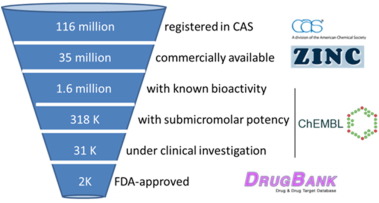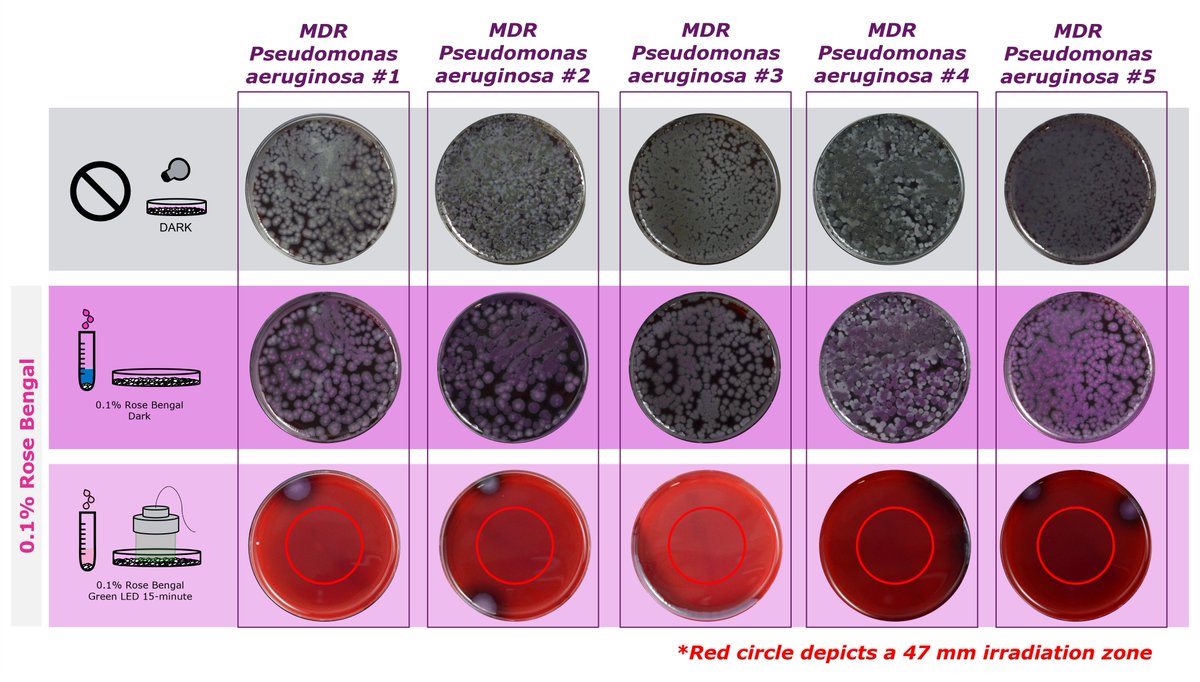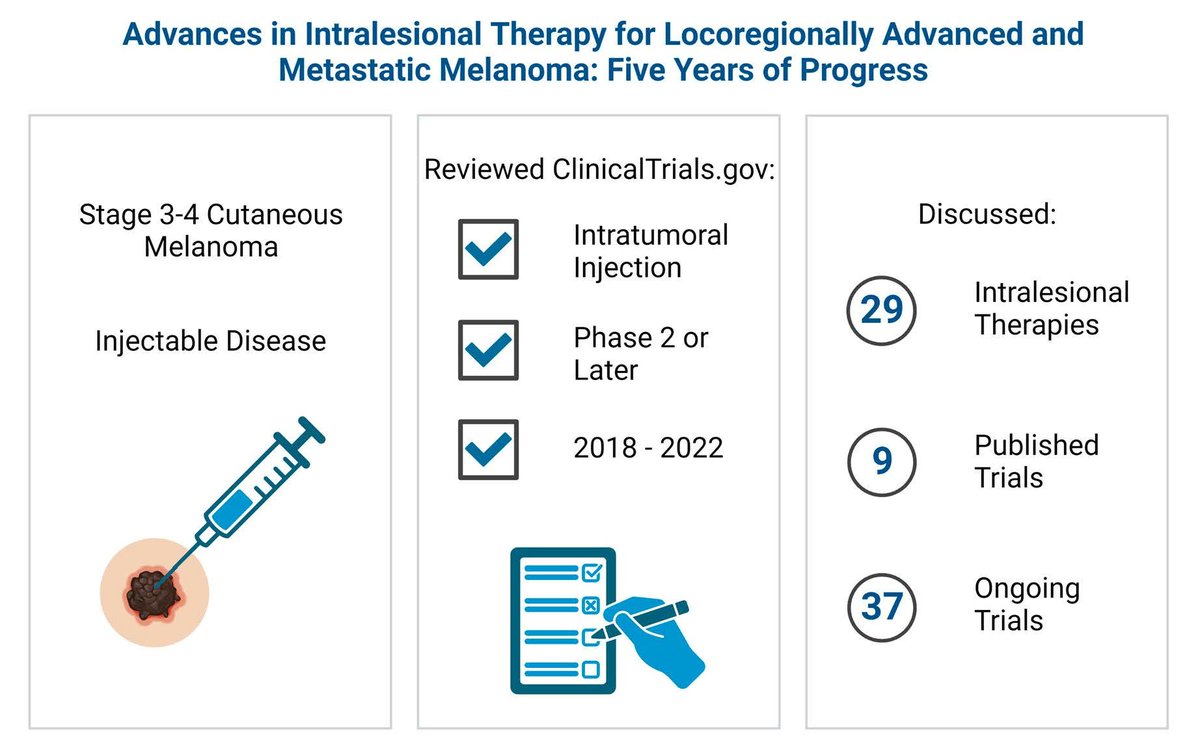1/ The impact of #Covid on $PVCT’s R&D, #DrugDiscovery, and clinical development of our #HalogenatedXanthene (#HX) medical science platform and #RoseBengalSodium (#RBS) investigational drug & drug formulation pipeline. A #THREAD.
2/ This $PVCT #thread will be an ongoing one for some time. Please check back to read it again (and again), and learn more about our medical scientific history and our lead molecule #RoseBengalSodium’s journey to becoming a multi-disease, broad-spectrum, therapeutic compound.
3/ #Covid has been a deeply painful experience, to say the least, for the U.S. and the world. It also marked a turning point in the advancement and expansion of our #HX medical science platform, as well as our lead molecule #RoseBengalSodium and the investigational drugs and drug… twitter.com/i/web/status/1…
4/ In early-March 2020, $PVCT’s leadership team discussed what, if any, role our #HX medical science platform and #RoseBengalSodium could play as a potential therapeutic for and/or prophylactic against #Covid. Sample timeline: defense.gov/Spotlights/Cor….
5/ $PVCT believed that #RBS might have the potential to be, specifically, a #Covid inhibitor and, more broadly, a broad-spectrum viral inhibitor.
6/ $PVCT knew that #RoseBengal had been shown to demonstrate significant antiviral activity in vitro: herpes simplex virus type 1 (HSV-1), vesicular stomatitis virus (VSV), influenza virus, murine respirovirus (formerly Sendai virus; aka murine parainfluenza virus type 1), etc. –… twitter.com/i/web/status/1…
7/ $PVCT endeavored to connect this in vitro #RoseBengal work in #virology to our extensive clinical (and preclinical) work in #oncology and then-emerging preclinical work in #hematology.
8/ $PVCT tells this story, in part, via #IntellectualProperty: “Novel Uses of Halogenated Xanthenes in Oncology and Virology,” US-20210299083-A1. image-ppubs.uspto.gov/dirsearch-publ…. Provisional filed 3/26/20. Application filed 3/25/21. Published 9/30/21.
9/ $PVCT: #oncology and #virology are related fields that intersect at the innate and adaptive immune systems of animals and humans. While disease etiology and manifestations are generally distinct, this intersection establishes a common basis for the application of discoveries… twitter.com/i/web/status/1…
10/ Just prior to year-end 2019, $PVCT learned from our research collaborators at the University of Calgary (Dr. Narendran; more on him later) that, using acute monocytic leukemia (AML) and other oncology-related preclinical models, #HXs such as #RBS can induce acute STING… twitter.com/i/web/status/1…
11/ This $PVCT STING work was presented at the American Association for Cancer Research (AACR) 2020 Virtual Annual Meeting II in June 2020 (#AACR2020): Association of Heat Shock Proteins as Chaperone for STING: A potential link in a key immune activation provectusbio.com/media/docs/pub…… twitter.com/i/web/status/1…
12/ STING is an important regulator of innate immunity. STING dimerization is critical to innate immune system signaling. Acute STING activation via dimerization is required for activity and protective function in both oncology and virology. $PVCT. #RoseBengalSodium. #RBS.
13/ Immune function increases rapidly during early childhood and remains consistent across adulthood until the onset of advanced age. Increased incidences of cancers and, maybe mortality from #Covid with age (that $PVCT thought at the time, could be attributable to changes in… twitter.com/i/web/status/1…
14/ $PVCT surmised at least 3 #Covid drug targets: (1) STING, (2) [the catalytic pocket of] #Covid’s main protease Mpro, and (3) #Covid’s characteristic surface spike (S) glycoprotein. More on this #virology ● #InfectiousDisease work later.
15/ $PVCT’s annual stockholder meeting (ASM) presentations from 2018 and 2019 should make it clear that #Covid provided a clear and then-present 2020 opportunity to explore, more deeply understand, and thus better communicate the true #Expanse of our #HX medical science platform.
16/ Historical context: A group of stockholders (PRH) entered into a Definitive Financing with $PVCT in 2017: prnewswire.com/news-releases/….
17/ $PVCT’s 2018 ASM presentation was an inventory of the known science and clinical & preclinical data that we had to work with at the time: provectusbio.com/media/docs/201….
18/ $PVCT’s 2019 ASM presentation described the beginning of our journey to better understand the multi-faceted traits of our lead #HX molecule, #RoseBengalSodium (slide no. 17), and assess the known strengths and weaknesses of checkpoint inhibitors: provectusbio.com/media/docs/201….
19/ As PRH finalized the transaction with $PVCT, we greenlit 2 key projects and #SRAs (sponsored research agreements). In chronological order: (1) Jim Krueger, MD, PhD at The Rockefeller University. (2) Aru Narendran, MD, PhD at the University of Calgary.
20/ The #SRA with Dr. Krueger and TRU in New York, NY was for initial clinical mechanism work on PH-10, $PVCT’s clinical-stage immuno-dermatology agent. The one with Dr. Narendran was for initial preclinical research on PV-10 and pediatric cancer cell lines.
21/ Dr. Krueger’s clinical work, because it spanned a wide range of interleukins (i.e., interleukin numbers), was consequential to us beginning to “bracket” $PVCT's #RoseBengalSodium’s behavior as immuno-dermatology agent PH-10.
22/ It is noteworthy, only for historical context, that some post-PRH-retained $PVCT members wanted to discard PH-10 and had previously advocated for the shutdown of its further development.
23a/ Dr. Narendran’s preclinical research on PV-10 in pediatric solid tumors (relapsed pediatric neuroblastoma, Ewing sarcoma, rhabdomyosarcoma, osteosarcoma) was important (proof-of-concept in vivo for refractory and relapsed pediatric solid tumor cancers; Replicability of… twitter.com/i/web/status/1…
23b/ Dr. Narendran: Swift et al. (2019), Potent in vitro and xenograft antitumor activity of a novel agent, PV-10, against relapsed and refractory neuroblastoma: dovepress.com/potent-in-vitr…. Proof-of-concept in vivo for refractory and relapsed pediatric solid tumor cancers.
23c/ Replicability of $PVCT’s lysosomal targeting: Wachter et al. (2002), Imaging Photosensitizer Distribution and Pharmacology using Multiphoton Microscopy: provectusbio.com/media/docs/pub….
23d/ Replicability of PV-10’s combination therapy characteristic: chemotherapy: Dees et al. SITC 2012, provectusbio.com/media/docs/pub….
23e/ Replicability of $PVCT PV-10’s combination therapy characteristic: radiotherapy: Foote et al. (2017), Results of a phase II, open-label, non-comparative study of intralesional PV-10 followed by radiotherapy for the treatment of in-transit onlinelibrary.wiley.com/doi/pdf/10.100…… twitter.com/i/web/status/1…
24/ Many healthcare companies (e.g., supplies, devices, pharmaceuticals, etc.) and their teams jumped into the battle against #Covid. See, for example, this article from that time (2020): forbes.com/sites/giacomot….
25/ In early-March 2020, $PVCT did too. #R&D #DrugDiscovery #HalogenatedXanthene #RoseBengalSodium #Covid #InfectiousDisease #virology.
26/ We called Dr. Narendran to ask for his lab team’s and his assistance to evaluate $PVCT's #RoseBengalSodium’s potential activity against #Covid. His team was already on it: in silico study (i.e., computer modeling). See the images below. 







27/ The Narendran Lab calculated initial negative binding energies of -2.5 kcal/mol for the N3 inhibitor, -3.4 kcal/mol for the reference molecule, and -14.3 kcal/mol for $PVCT’s PV-10 (otherwise known as Vina scores from AutoDock Vina open source molecular modeling simulation… twitter.com/i/web/status/1…
28/ There are pros, cons, benefits, caveats, etc. with in silico work, as there is with in vitro and in vivo studies. See here, for example: invivobiosystems.com/drug-discovery….
29/ It is important to keep in mind that in silico, in vitro, and in vivo study are steps in the drug discovery process. For $PVCT, from a therapeutic perspective, with clinical trial and expanded access data in oncology, clinical trial data in dermatology, pilot study clinical… twitter.com/i/web/status/1…
29/ So, to be clear, The Narendran Lab’s in silico (i.e., computer modeling) work was the first such study by $PVCT, ever…
30/ As we noted earlier in this “Tweetstorm,” replicability of $PVCT medical science is very important, and very important to us.
31/ During the early months of #Covid, Researchers from Oak Ridge National Laboratory (ORNL), where $PVCT’s former founders came from, used ORNL’s supercomputer Summit – via in computer modeling (i.e., in silico study) to identify drug candidates that may show promise for… twitter.com/i/web/status/1…
32/ ORNL, February 2020: Smith et al. “Repurposing Therapeutics for COVID-19: Supercomputer-Based Docking to the SARS-CoV-2 Viral Spike Protein and Viral Spike Protein-Human ACE2 Interface.” s3-eu-west-1.amazonaws.com/itempdf7415535….
33/ ORNL: cnn.com/2020/03/19/us/….
34/ Smith and Smith tabulated Vina scores of molecules in the SWEETLEAD database, noting the compound permirolast as having the most negative binding energy (i.e., highest [negative] Vina score).
35/ Despite being in the SWEETLEAD and ZINC databases (sort of), $PVCT’s #RoseBengalSodium did not register in the Smiths’ analyses of Summit’s number-crunching. 

36/ $PVCT asked Dr. Narendran if his lab team could further their in silico work with pemirolast (from Smith et al.’s and ORNL’s computer modeling work).
37/ Dr. Narendran’s team returned an initial perspective of #RoseBengalSodium (PV-10) showing a preliminary calculation of negative binding energy equal to or better than pemirolast: -12.5 kcal/mol for $PVCT’s PV-10 and -7.2 kcal/mol for $PVCT’s PV-10 (again, using the virus… twitter.com/i/web/status/1… 







39/ After $PVCT spent further time with them, ORNL realized that the molecular pose, shall we say, of #RoseBengalSodium in the SWEETLEAD database (the molecule was also in the ZINC database) was, um, different (i.e., wrong)…
40/ This is among what can and does happen when the rest of the world is still using a 19th-century molecule, and $PVCT’s #RoseBengalSodium is a 21st-century #IntellectualProperty-protected, proprietarily-synthesized, immunogenic small molecule.
41/ Even with the somewhat incorrect molecular structure/pose. ORNL noted that their docking calculations suggested stronger binding affinities for $PVCT's #RoseBengalSodium at a presumed inhibitor binding site in the M-Pro protease. Critically, this then replicated Dr.… twitter.com/i/web/status/1…
42/ ORNL subsequently redid their in silico work, using guidance from us as to what structure to use, that then conformed with Dr. Narendran’s team’s work on $PVCT’s #RoseBengalSodium.
43/ ORNL then engaged in a blind-docking exercise using #RoseBengalSodium against additional #Covid targets (e.g., endoribonuclease, NSP3, two different N-protein fragments, NSP10, NSP16, and NSP9). $PVCT’s lead #HalogenatedXanthene molecule appeared to be quite promiscuous, with… twitter.com/i/web/status/1…
44a/ What is (are) $PVCT’s point(s), theme(s), or narrative(s) of this University of Calgary, Alberta, Canada-ORNL, Tennessee, USA “cross-border” #Covid story? First (1.) and foremost, replicability: obtaining consistent results from different studies (in this case, in silico or… twitter.com/i/web/status/1…
44b/ Other $PVCT points include: 2. Selective promiscuity. 3. Multiple targets. 4. Multiple mechanisms. 5…
45/ These #points (aka themes, narratives, etc.), in #virology and #InfectiousDisease, connect across $PVCT’s drug discovery and clinical development work in [at least] oncology, dermatology, and hematology to date.
46/ Molecular Promiscuity: See Bojadzic et al. “Toward Small-Molecule Inhibition of Protein–Protein Interactions: General Aspects and Recent Progress in Targeting Costimulatory and Coinhibitory (Immune Checkpoint) Interactions.” See page 9. ncbi.nlm.nih.gov/pmc/articles/P….
47/ In 2021, following the #Covid computer modeling experiences with the University of Calgary and ORNL, $PVCT approached a pharmaceutical services firm to undertake more in silico work.
48/ Computer modeling in drug discovery is, like in vitro work (e.g., high-throughput screening) and in vivo work, a funneling or winnowing exercise. See the images below. Lots of molecules, compounds, ligands, etc. A target (of a disease). What molecule hits the target? 





49/ $PVCT thought to turn the approach to in silico study on its head. One molecule (#RoseBengalSodium). Lots of targets.
50/ One molecule-and-one target is a function of the known knowns (i.e., a known target). A known unknown would be an unvalidated target of a disease (i.e., a new mechanism not yet shown to have therapeutic relevance). And then there would be the unknown unknowns.
51/ $PVCT initially got some funny looks from the computer modelers when we posed the in silico question of inverting the drug discovery funnel in order to determine what target(s) [of a disease and across diseases] could #RoseBengalSodium hit.
52/ One target of $RoseBengalSodium in this 2021 work, without $PVCT prompting, turned out to be STING, or stimulator of interferon (IFN) genes. See the image below. There were a handful of other potential targets in silico. 

53/ Dr. Narendran’s lab from the Cumming School of Medicine at the University of Calgary showed, via in vitro work, that $PVCT's PV-10 treatment led to STING dimerization and the release of interferon gamma (IFNγ). This work was presented at #AACR2020: provectusbio.com/media/docs/pub….
54/ Dr. Narendran’s lab described a previously unidentified mechanism of STING activation by $PVCT’s PV-10, which may facilitate sustained immune activation and therapeutic antitumor activity.
55/ $PVCT understands the knowledge data that can come from preclinical research, like in silico, in vitro, and in vivo studies. We understand the limitations of this aspect of drug discovery, and the importance of characterizing #RoseBengalSodium in customary biopharmaceutical… twitter.com/i/web/status/1…
56/ Since 2020 and #Covid, one prong of $PVCT’s business strategy (our ongoing R&D) has been to ask the question: Does $PVCT's #RoseBengalSodium target disease [fill-in-the-blank]?
57/ THREAD END: The impact of #Covid on $PVCT’s #R&D, #DrugDiscovery, and clinical development of our #HalogenatedXanthene medical science platform and #RoseBengalSodium investigational drug & drug formulation pipeline.
@threadreaderapp
unroll
unroll
• • •
Missing some Tweet in this thread? You can try to
force a refresh









